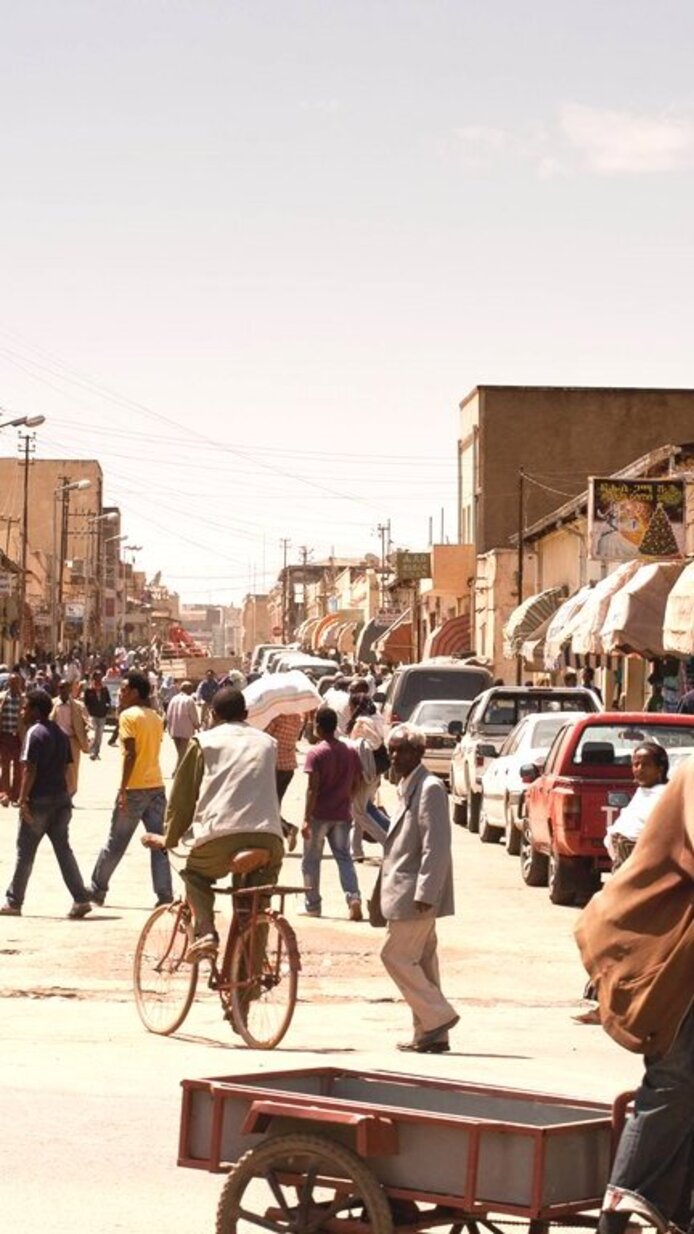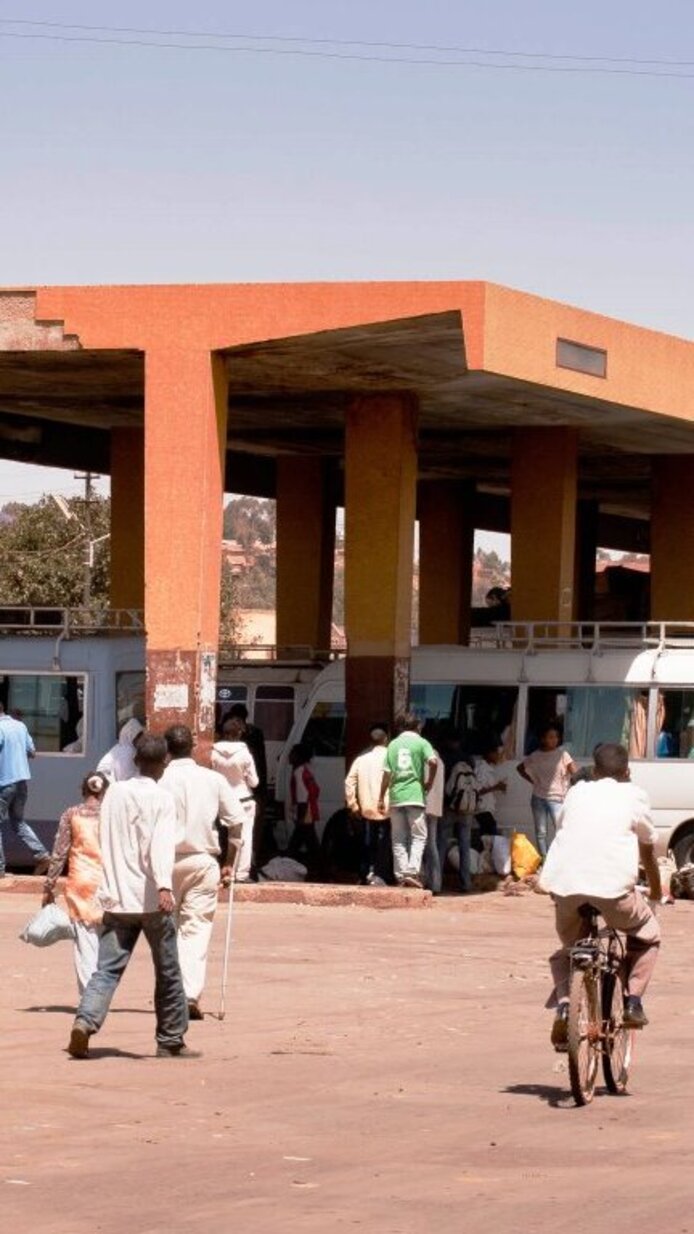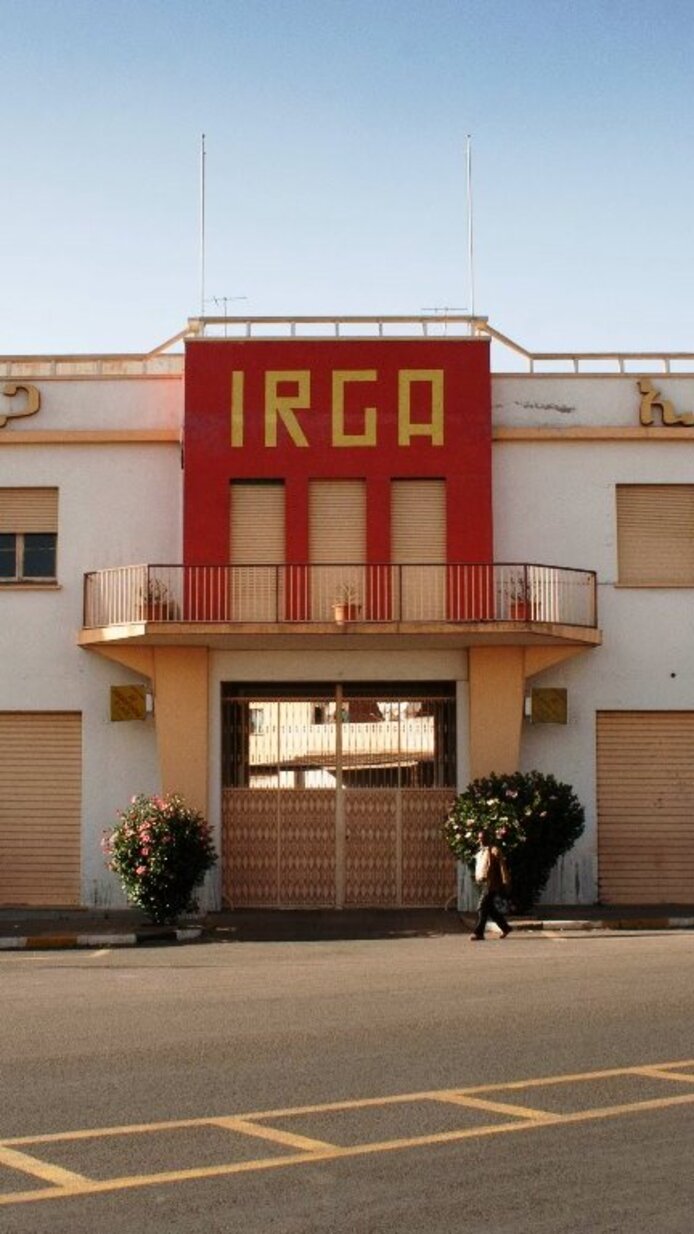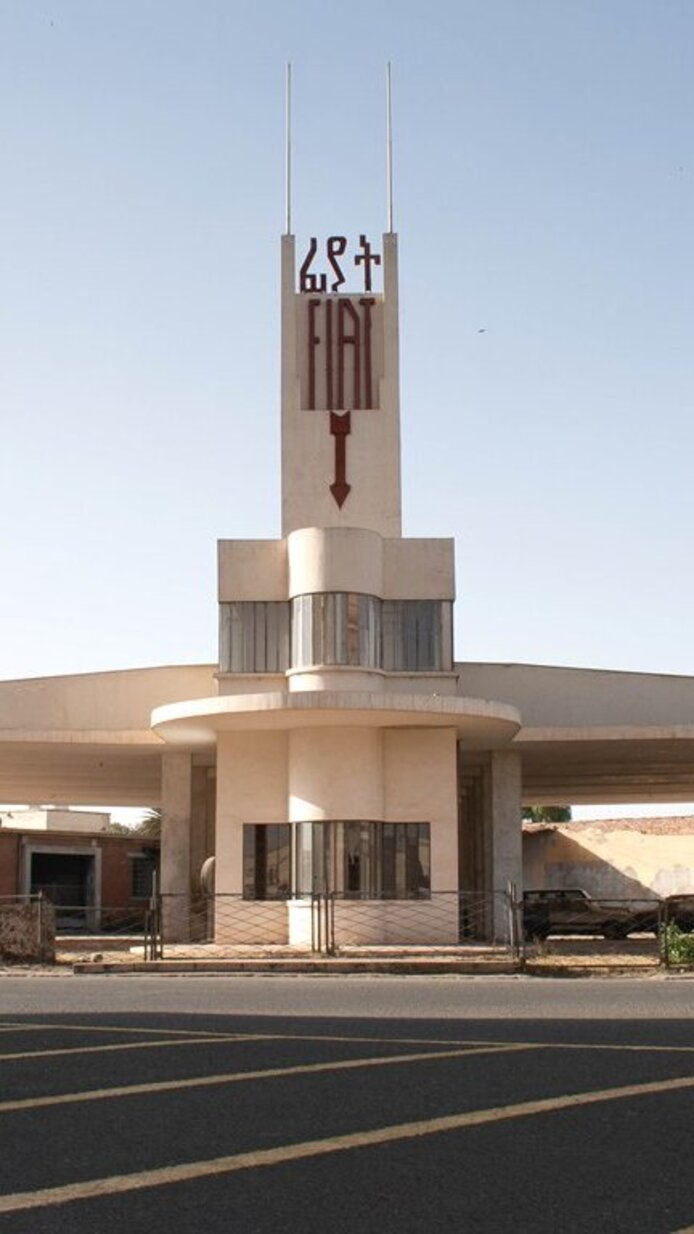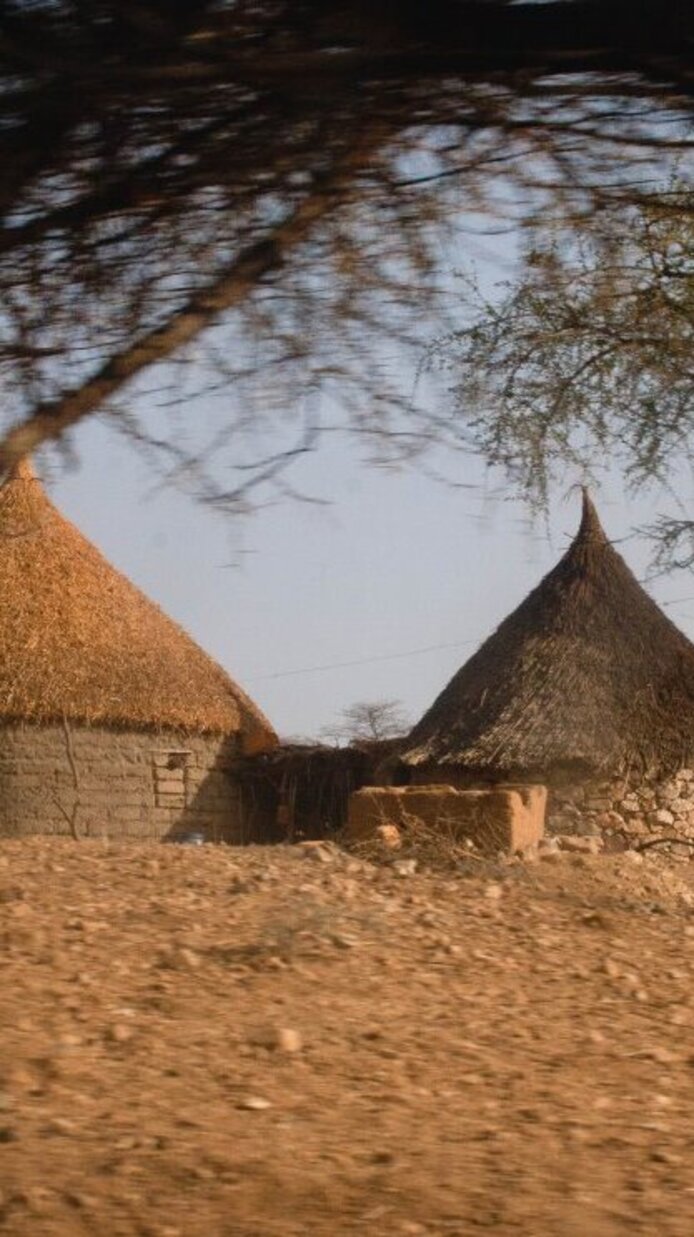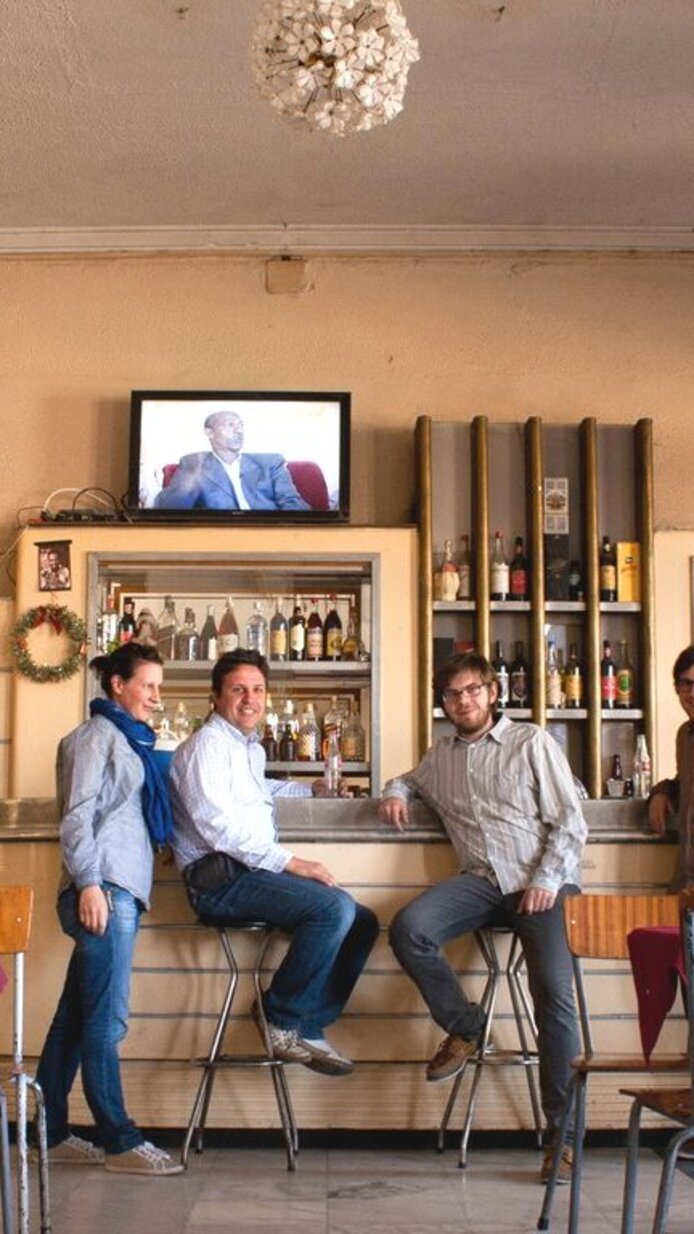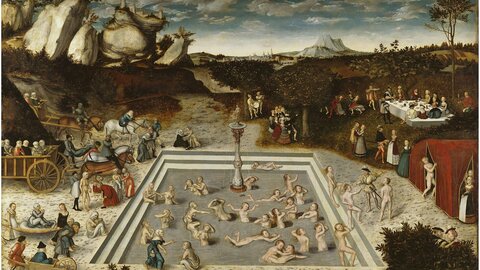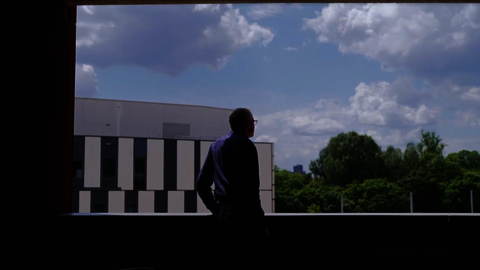The many layers of Bella Asmara
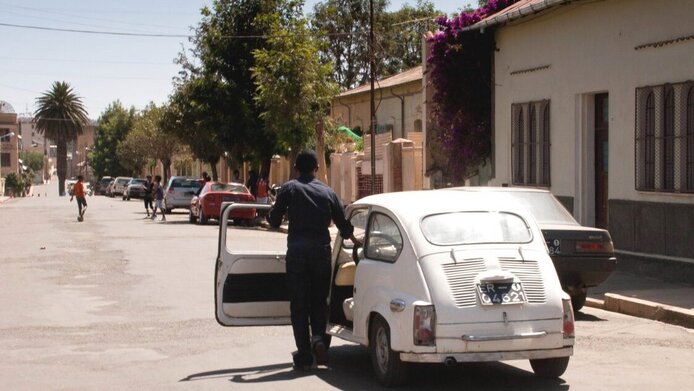
Asmara, the capital of the young state of Eritrea, boasts one of the world’s largest intact assemblages of 20th-century classical modernist architecture. The city centre was developed as an administrative capital during the Italian colonial regime in East Africa. In the process, a modern urban fantasy was erected on the high plateau with its mild climate between 1935 and 1941. Although fascist architecture as found in Italy does not exactly bewitch by its subtlety, this cultural monument on the Horn of Africa intrigues lovers of architectural design. Ever since Eritrea became independent from Ethiopia in 1991, art guidebooks and architectural exhibitions have celebrated Asmara as a ‘sleeping beauty’ which must be preserved for future generations. For Eritrea, the city centre with its colonial architecture is not only a tourist destination bringing revenue to the country, it is also an acknowledged part of the history and identity of the young nation. With support from the Austrian Science Fund FWF, a team from the Faculty of Architecture at the University of Innsbruck has begun a critical exploration of the notion of a “time capsule suffused with Italian dolce vita”, adding to this the postcolonial context of Asmara.
Historical monument & postcolonial living environment
The team members from the Institute of Architectural Theory and Construction History were able to build their project on research already undertaken with respect to Casablanca and Kinshasa. “Colonial cities were often projection screens for modernist fantasies and were built as futuristic visions for European cities. Asmara was an early city of motorists - at the time it even had more traffic lights than Rome”, explains principal researcher Peter Volgger. In light of the political upheavals that occurred once the country ceased to be an Italian East African colony, Asmara is not only a phenomenon in terms of its architectural history, but also in terms of its present reality as a postcolonial country. “We were interested in the role this architecture plays for local people today. We wanted to develop a theory about the current impact of colonial architectural history.” The researchers based this approach on Michel Foucault’s notion of biopolitics, which centres on the state’s power over its citizens.
An appropriation of colonial architecture
One of the fastest growing conurbations in East Africa, Greater Asmara not only consists of magnificent boulevards and exclusive residential districts. The city centre is surrounded by indigenous settlements with markets and circular stone huts (called tukuls) and a forest of cacti growing around its outskirts. Between February 2013 and January 2015, four researchers from Innsbruck explored the colonial and postcolonial development of the city. Using the so-called ‘bean drop’ method, they investigated small neighbourhoods identified at random and described them in detail. The scholars would hire a taxi to go along a road, filming and documenting the functions of the buildings as they passed by. The project centred on the issue of how the Eritrean population came to grips with the heritage of the colonial architecture. The Austrian scientists questioned inhabitants as to how the buildings are used now, but they also conducted interviews with official representatives of the government, with the Eritrean diaspora, with the city archives, etc. In a parallel strand of research they studied the work done on the ground by international institutions such as the World Bank, UNESCO and the EU. They found that not all parts of the city are used by everyone equitably. “Although nothing has disappeared, the Eritrean capital is not a ‘frozen city’. We were able to document 27 layers of urban development which can be assigned to different functions”, notes the architectural theoretician Peter Volgger. As a complement to the FWF grant, the University of Innsbruck funded the technical equipment the scholars needed to scan old city maps from the archives and to process satellite imagery.
Research tracing urban development
Every urban development layer was documented by means of its own figure-ground plan showing only buildings belonging to a certain theme or type. One layer, for instance, is the ‘hedonistic Asmara’, the tourist destination with its bars, sports facilities, hotels and pools. Other layers relate to the medical, military, ethnic or political spheres of Asmara. It can be shown that the famous Asmara bars are not timeless icons of unchanging usage: “Owing to the restrictive definition of what is public space in present-day Eritrea, they take on new significance today. A certain bar may, for instance, be the meeting place for a particular political grouping. Or it may encourage a lifestyle which cannot be pursued in the rest of the city”, Peter Volgger elaborates. Placed on top of each other, the 27 figure-ground plans make up the entire city of today. The results of the team from the University of Innsbruck go beyond the context of architectural theory. “Bella Asmara” is slowly falling apart. After 30 years of civil war, the city simply has no budget for conservation measures. Due to be published in 2017, the book Asmara – Colonial City and Postcolonial Experiences contains not only the research results but also tangible recommendations to make Greater Asmara part of UNESCO's World Heritage list.
Personal details Peter Volgger studied philosophy/history, architecture and art history in Innsbruck. A freelance architect since 2003, he is also an assistant professor at the Institute of Design of the University of Innsbruck and teaches at the Institute of Architectural Theory and at the University of Liechtenstein. Volgger is a member of the ‘4 Arbate-Asmara’ group.
Project website txt.architekturtheorie.eu Publications and articles
